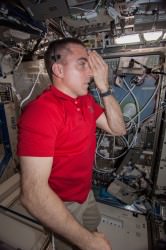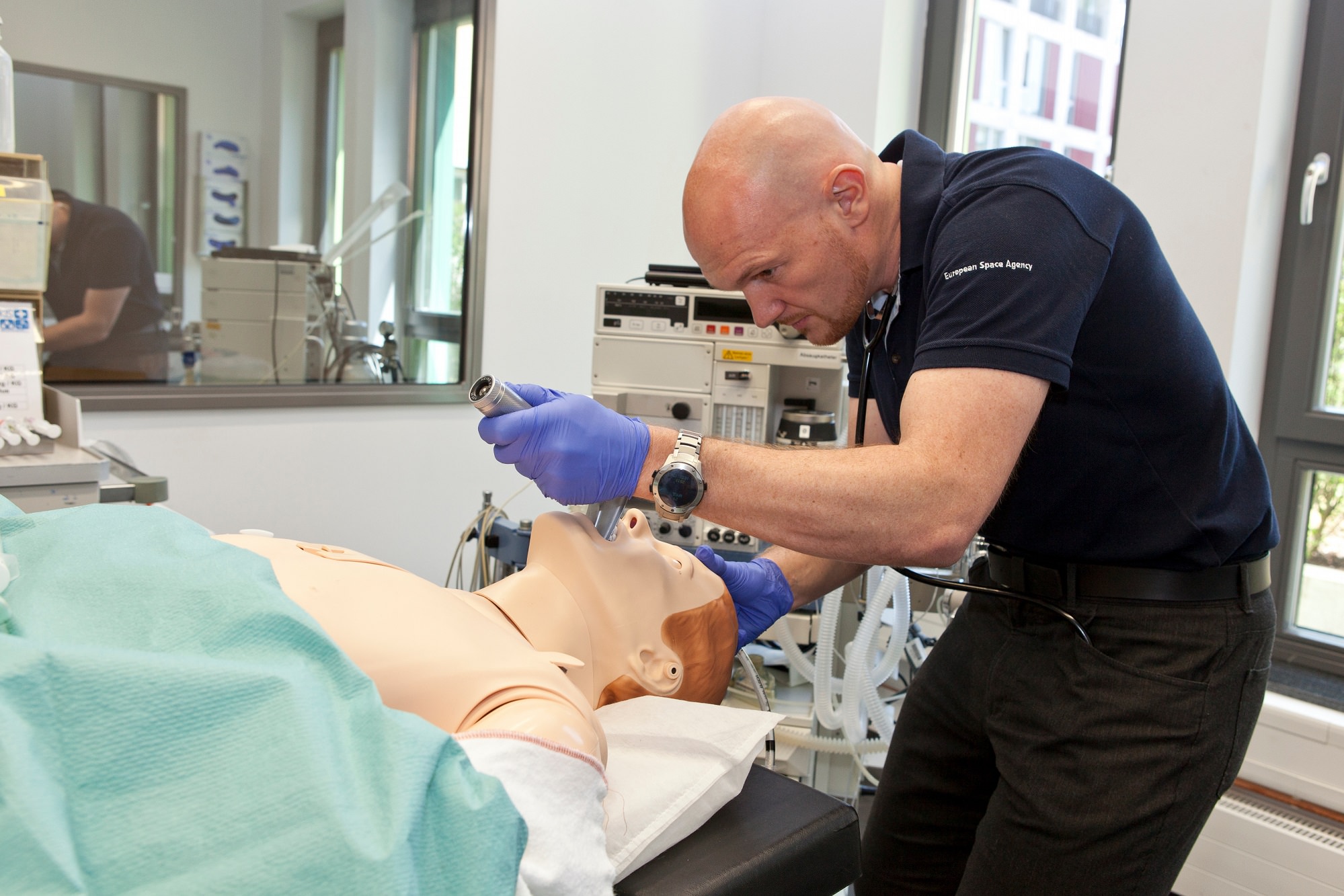Should an astronaut get sick on the International Space Station, that could be a bad scene given the nearest hospital requires a spaceship ride. That’s why every crew has at least two medical officers on board that can deal with some routine procedures, getting to items as complex as filling teeth, for example.
How to get that training done?
Here’s an example: above is Alexander Gerst, an astronaut with the European Space Agency, recently working with a mannequin at the Uniklinik Köln, a hospital in Cologne, Germany. The mannequin is at least as realistic as some baby dolls you can buy in stores: “it blinks, breathes and responds to injections”, ESA stated.
That’s in addition to three days Gerst spent in operating theatres, emergency and the intensive care unit at the hospital. He has about another year to do medical training before going to station for Expedition 40/41 in May 2014.

Mind you, help is also a phone call away to a ground control station, who has doctors on site. Also, there are a lot of medical doctors or similarly trained personnel that fly in space.
On board the International Space Station right now is a trained Navy SEAL, for example: Chris Cassidy. He would have been trained to treat injuries during combat. In May, he told Universe Today that he expects “muscle memory” would kick in during an emergency, whether medical or station-related:
“I think just the training that I got in the field, training in the early part of my Navy career, and during my time being an astronaut will all combine together,” he said.
“What I know from combat in the Navy, there’s a sort of calmness that comes over people who are well-trained and know what to do. Muscle memory kicks in, and it’s not until after the thing is over that you realize what you went through.”
While those who fly in space train for medical emergencies, they also serve as medical guinea pigs for ongoing experiments. Turns out microgravity simulates aging processes on Earth, so the research could have benefits on the ground in future decades. Here’s a couple of experiments happening right now on station:
- Space Headaches: “Current, pre, in-flight and post-flight data via questionnaires to evaluate the prevalence and characteristics of crewmembers’ headaches in microgravity.”
- Reaction Self Test: “A portable 5-minute reaction time task that will allow the crewmembers to monitor the daily effects of fatigue on performance while on board the International Space Station.”
Looking at the medical aspect alone, it’s abundantly clear why astronauts spend years in training before flying to the station. Remember, though, this is on top of other science experiments they do there, not to mention repairs, maintenance and the occasional spacewalk or catching a supply spacecraft.

